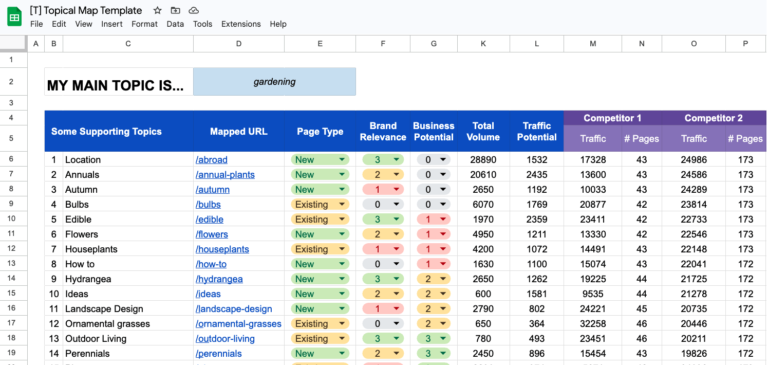Growing a business isn’t just about working harder; it’s about working smarter. A well-thought-out growth strategy helps you identify opportunities, allocate resources effectively, and create a roadmap for sustainable expansion. Whether you’re a startup or an established company, a growth strategy is essential to scale your business in today’s competitive landscape.
Here’s a step-by-step guide to creating and implementing a successful growth strategy:
1. Understand Your Current Position
Before planning for growth, you need to assess where your business stands today. This includes evaluating your strengths, weaknesses, opportunities, and threats (SWOT analysis).
Key Actions:
- Analyse your financial health, including revenue streams, profit margins, and cash flow.
- Identify your unique selling proposition (USP) that sets you apart from competitors.
- Assess customer satisfaction and retention rates.
2. Define Clear Goals
Growth requires a clear vision of what success looks like. Set specific, measurable, achievable, relevant, and time-bound (SMART) goals.
Examples:
- Increase revenue by 20% within the next 12 months.
- Expand into two new markets by Q3.
- Boost customer retention rates by 15%.
Pro Tip:
Align your growth goals with your long-term vision to ensure consistency in your efforts.
3. Identify Your Growth Levers
Every business has unique opportunities for growth. Focus on the areas that will have the most significant impact.
Common Growth Levers:
- Market Penetration:
- Increase your share in existing markets through better marketing and sales strategies.
- Market Expansion:
- Enter new geographical regions or demographics.
- Product Development:
- Launch new products or enhance existing ones to attract more customers.
- Diversification:
- Explore entirely new markets or industries.
4. Know Your Target Audience
Understanding your customers is critical to growth. Invest in customer research to learn their preferences, needs, and pain points.
Key Actions:
- Segment your audience based on demographics, behaviours, and preferences.
- Create detailed buyer personas to guide your marketing and product strategies.
- Use customer feedback to refine your offerings.
5. Build a Marketing Strategy
Your marketing efforts should be aligned with your growth objectives. Use data-driven approaches to reach and engage your target audience effectively.
Key Components:
- Content Marketing: Publish blogs, videos, and guides that provide value to your audience.
- Social Media Marketing: Build a presence on platforms where your audience is active.
- Email Campaigns: Use personalised email marketing to nurture leads and retain customers.
- Search Engine Optimisation (SEO): Optimise your website to rank higher in search engine results.
Pro Tip:
Leverage analytics tools like Google Analytics or HubSpot to measure the success of your campaigns and refine your strategies.
6. Invest in Technology
Technology can significantly accelerate growth by improving efficiency, scaling operations, and enhancing customer experiences.
Key Tools:
- Customer Relationship Management (CRM): Use tools like Salesforce or HubSpot to manage customer interactions.
- Automation Software: Automate repetitive tasks like email campaigns and invoicing.
- E-commerce Platforms: If applicable, optimise your online store with tools like Shopify or BigCommerce.
7. Strengthen Your Team
Growth is a team effort. Ensure you have the right people in place to execute your strategy.
Key Actions:
- Hire employees with skills that align with your growth goals.
- Invest in employee training and development.
- Foster a culture of innovation and collaboration.
8. Monitor Financial Health
Growth often requires upfront investments. Keep a close eye on your financial metrics to ensure stability during expansion.
Key Actions:
- Prepare a detailed budget for growth initiatives.
- Monitor key financial metrics like gross margin, operating expenses, and customer acquisition cost (CAC).
- Explore funding options, such as loans, venture capital, or crowdfunding, if needed.
9. Leverage Strategic Partnerships
Partnering with complementary businesses can open new avenues for growth.
Examples:
- Collaborate with influencers or other brands for co-marketing campaigns.
- Build reseller or affiliate programs to expand your reach.
- Partner with local businesses to enter new markets.
10. Measure and Iterate
Growth is an ongoing process that requires constant evaluation and adaptation.
Key Actions:
- Track key performance indicators (KPIs) like revenue growth, customer acquisition rates, and market share.
- Regularly review the success of your initiatives.
- Be flexible and willing to pivot if strategies aren’t delivering the desired results.
Growth Strategy Examples
-
Apple:
Focuses on product innovation and a premium brand experience to maintain market leadership.
-
Amazon:
Combines market expansion, technological innovation, and customer-centric strategies to dominate e-commerce and other industries.
-
Tesla:
Uses a combination of product innovation, sustainability focus, and market disruption to achieve growth.
Conclusion
A growth strategy is essential for scaling your business in a structured and sustainable way. By understanding your current position, setting clear goals, and leveraging the right tools and strategies, you can unlock your business’s full potential. Stay committed to monitoring your progress, learning from results, and adapting to changes to ensure long-term success.
The question isn’t if your business can grow—it’s how far you’re willing to take it.






